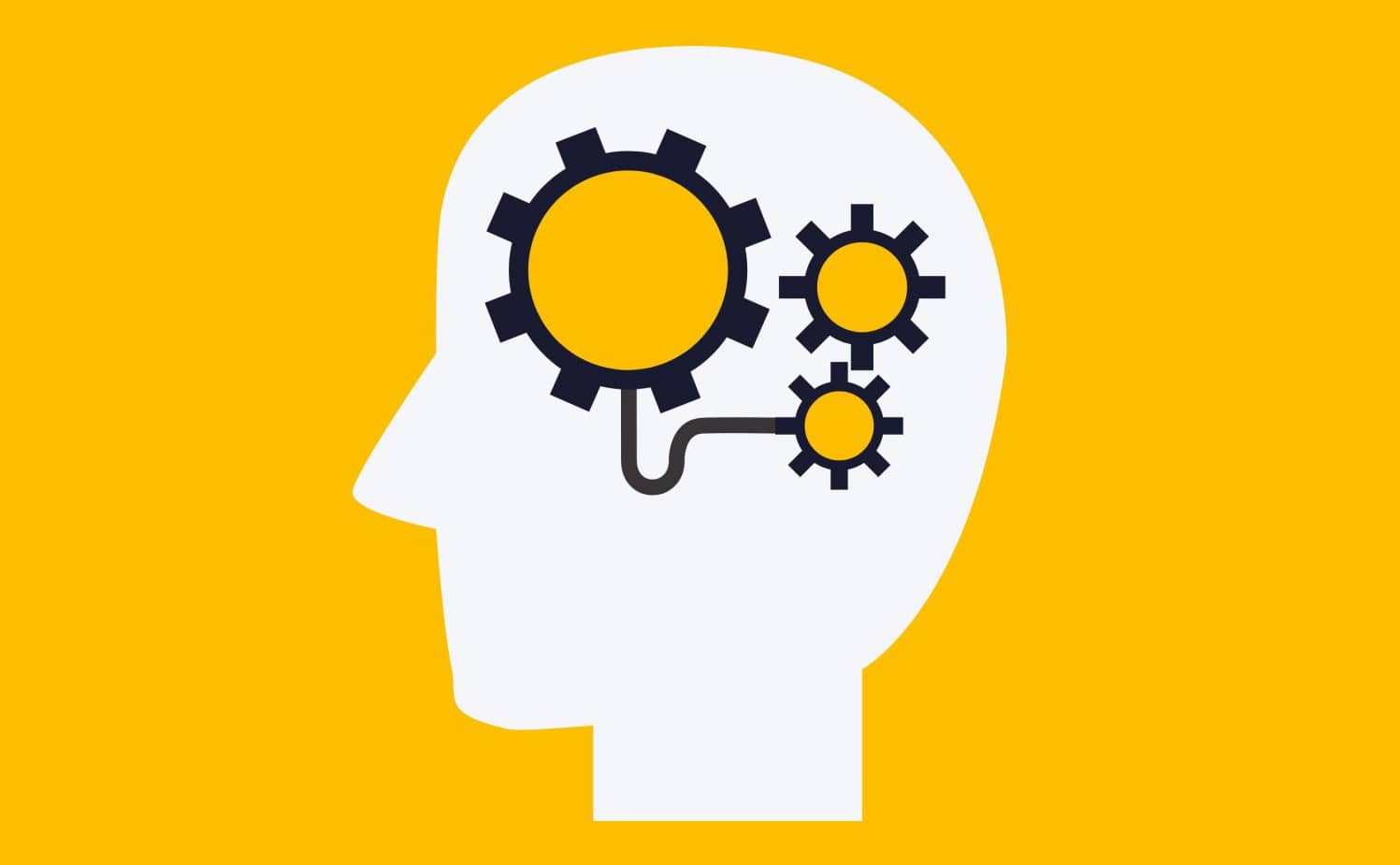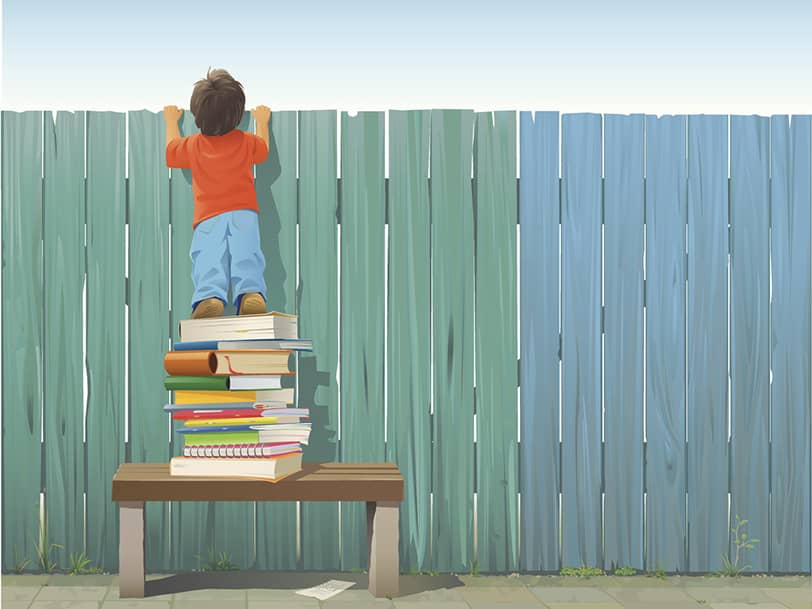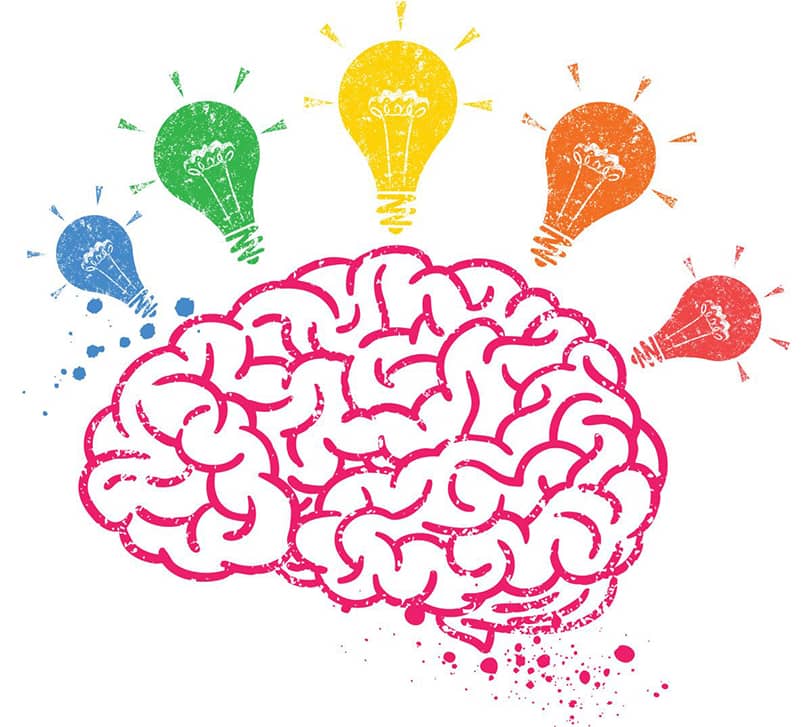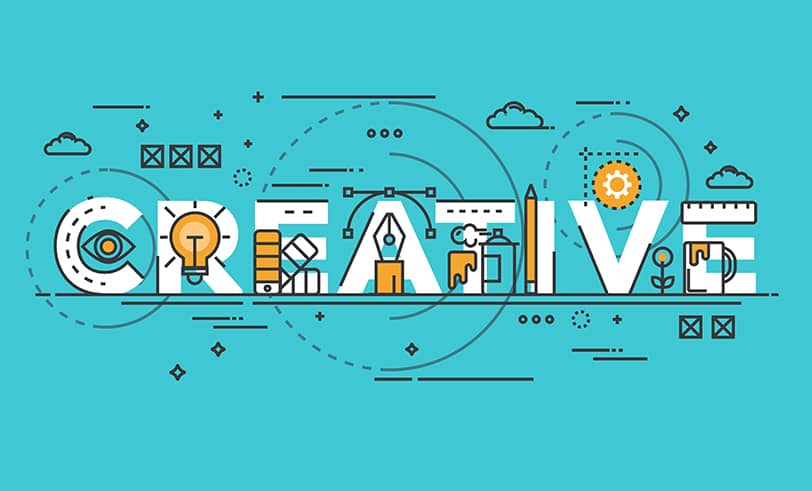Creative thinking is the ability to go beyond habitual patterns, find unconventional solutions, and see opportunities where others see only limitations. In the modern world, where changes occur at an incredible pace, the ability to think creatively is not just a useful skill but a necessity. It helps us adapt to new conditions, solve complex problems, and create innovations that change our lives. However, to unlock our creative potential, it is important to realize that our thinking is often confined within the frameworks of patterns and stereotypes we have absorbed since childhood.
Why do we so often think in patterns? The reasons lie in the very structure of our society. From an early age, we are taught to follow certain rules: in school, we are given ready-made answers to questions; in the family, we are guided onto the “right” path; and in society, conformity is encouraged.
All this forms stable thinking patterns that help us quickly respond to familiar situations but, at the same time, limit our ability to see alternatives. Education based on standards, social norms that dictate how we “should” act, and even upbringing, which is often aimed at minimizing mistakes, all create a solid cage for our imagination.
Patterns and stereotypes, while making life easier in familiar conditions, become a serious obstacle when we encounter something new. They make us act automatically, without thinking, and miss opportunities for growth. For example, we might work for years at a job we dislike simply because “that’s how it’s done,” or reject bold ideas out of fear of judgment. Patterned thinking limits not only our creativity but also our freedom, forcing us to live within the framework of others’ expectations.
Awareness of these limitations is the first step toward thinking differently. Creative thinking is not just the ability to come up with something original; it is the willingness to challenge habitual patterns, ask uncomfortable questions, and seek paths that previously seemed impossible.

Signs of Patterned Thinking
Creative thinking is a path to the freedom of ideas, but to start moving along this path, it is important to first understand where and how we are held back by patterns. To do this, we need to carefully examine our thoughts, actions, and reactions in different areas of life.
Patterned thinking manifests itself in the most mundane situations; it can be so habitual that we don’t even notice how we limit ourselves. But as soon as we start noticing these signs, we gain the opportunity to change our thinking and open the door to new ideas.
Examples from Life, Work, and Creativity
Patterned thinking can be easily noticed if we observe how we act in different situations. For example, at work, we often use the same methods to solve problems, even if they are no longer effective. We say, “I always do it this way” or “This is a proven method,” without considering that there might be simpler or more creative solutions.
In creativity, patterns manifest themselves in the repetition of the same ideas, styles, or approaches. An artist might paint in the same technique for years, afraid to experiment, while a writer might use the same plot twists because they “guarantee success.”
In personal life, patterns of thinking often reveal themselves in our reactions to conflicts or difficult situations. For example, we might automatically blame others for our problems instead of looking for the root cause within ourselves. Or, when faced with something new, we immediately say, “This isn’t for me” or “I won’t succeed,” without even trying.
Another vivid example is our attitude toward failure. Patterned thinking makes us perceive mistakes as something terrible, even though they can be valuable experiences. We are afraid to step out of our comfort zone because we are used to a certain order of things, and this hinders our growth.
How to Recognize That You Think Stereotypically?
To understand that your thinking is confined within patterns, you need to ask yourself a few questions and answer them honestly. For example:
- Do you often say, “This is impossible” or “This isn’t how it’s done”?
If yes, then you are likely thinking stereotypically. Creative thinking begins with the question: “What if it is possible?” - Do you use the same methods to solve problems?
If you always act according to a familiar scheme without trying to find new approaches, this is a clear sign of patterned thinking. - Are you afraid to try something new?
Fear of the unknown is one of the main signs that your thinking is limited by stereotypes. - Do you often criticize new ideas without even trying them?
If you immediately reject everything that seems strange or unfamiliar to you, this indicates that you think in patterns.
Another way to recognize patterned thinking is to observe your emotions. If you feel irritated when someone suggests an unconventional solution or fear when you need to do something new, this is a clear signal that your thinking is confined within habitual frameworks.

Why is it important to develop creative thinking?
Technology, the economy, culture – everything around us is constantly changing, and those who can adapt and find unconventional solutions come out on top. Creative thinking is not just the ability to come up with something new; it is the ability to look at the world from a different angle, find connections between seemingly unrelated things, and create what once seemed impossible.
But why is this so important right now? In the era of automation and artificial intelligence, many routine tasks are being taken over by machines, and the skills that machines cannot yet master are coming to the forefront: creativity, emotional intelligence, and the ability to think outside the box. Creative thinking helps not only in the professional sphere but also in personal life, making us more flexible, open, and capable of handling any challenges.
Advantages of Creative Thinking
One of the key advantages of creative thinking is adaptability. In a world where everything changes so quickly, the ability to quickly adapt to new conditions becomes critically important. Creative people know how to find opportunities even in crises because they are not afraid of change and are willing to experiment.
Moreover, creative thinking is directly linked to career success. Today, employers increasingly value employees who can propose new ideas, improve processes, and find unconventional solutions. Creativity becomes a competitive advantage that helps you stand out from the crowd.
But it’s important to remember that creative thinking is useful not only for your career but also for personal life. It helps build more harmonious relationships, find common ground with people, and resolve conflicts peacefully. Creative people often feel more satisfied with life because they know how to find joy in the little things and see beauty in the ordinary.
Examples of Famous People Who Thought Differently
History is full of examples of people who achieved success thanks to their creative thinking. Take Steve Jobs, for example. He was not an engineer or a programmer, but it was his ability to see opportunities where others saw only limitations that helped create products that changed the world. Jobs thought outside the box, combining technology and art, and that’s what made Apple one of the most successful companies in the world.
Another striking example is Marie Curie. At a time when women rarely pursued science, she not only became the first woman to win a Nobel Prize but also made discoveries that revolutionized medicine. Her creative approach to research and willingness to go against stereotypes continue to inspire to this day.
And here’s an example from the world of art – Pablo Picasso. He was not afraid to break the conventional canons of painting, experimenting with shapes and colors, and as a result, he created a new art movement—cubism. His creative thinking allowed him to see the world differently and show it to others.

How to Break Free from Patterns: Practical Steps
Creative thinking is not an innate gift but a skill that can be developed. However, this requires effort and stepping outside habitual frameworks. The thinking patterns we’ve formed over the years may seem convenient and safe, but they are what hold back our potential. To start thinking differently, it’s important to recognize your limitations and gradually learn to overcome them.
Breaking free from patterns is a process that takes time, patience, and a willingness to experiment. But if you follow certain steps, you can gradually unlock your creativity and start seeing the world in new colors. Let’s break it down.
Step 1: Awareness of Stereotypes
The first step to breaking free from patterns is realizing that they exist. We often don’t even notice how our thoughts and actions are governed by habitual schemes. To identify your thinking patterns, start with self-reflection. Ask yourself:
- What beliefs do I consider absolutely true?
- What actions do I repeat day after day without thinking?
- In what situations do I most often say, “This is impossible” or “This isn’t how it’s done”?
Try keeping a journal where you record your thoughts and reactions to different situations. This will help you spot recurring patterns. For example, you might notice that you always avoid risks or are afraid to try something new. Recognizing these patterns is the first step to overcoming them.
Step 2: Cultivating Curiosity
Curiosity is the key to creative thinking. When we ask questions and seek new knowledge, we open ourselves up to new horizons. Start with something simple: ask yourself “why?” and “how?” in the most ordinary situations. For example, if you see something that seems familiar, ask yourself, “Why is it set up this way? Could it be done differently?”
Reading books, watching documentaries, and interacting with people from different fields—all of this helps broaden your horizons and see new possibilities. Try to learn something new every day, even if it seems insignificant. The more you know, the more ideas you can generate.
Step 3: Playing with Imagination
Imagination is a powerful tool for breaking free from patterns. Try techniques that help develop your imagination. For example, the “What if?” game allows you to look at familiar things from a new angle. Ask yourself unusual questions: “What if people could fly? How would that change the world?” or “What if I could start over? What would I do differently?”
Another technique is visualization. Close your eyes and imagine yourself in a completely new world where there are no familiar limitations. What would you do? How would you live? Such exercises help “awaken” your imagination and see new possibilities.
Step 4: Experimentation and Mistakes
One of the main fears that holds back our creative thinking is the fear of making mistakes. We are afraid of doing something wrong because we are used to thinking that mistakes are bad. But in reality, mistakes are valuable experiences that help us learn and grow.
Start small: try new approaches in everyday tasks. For example, change your route to work, try a new hobby, or cook a dish using an unfamiliar recipe. The more you experiment, the easier it will be to break free from patterns.
Remember that every mistake is a step toward a new discovery. Thomas Edison, while working on the invention of the electric light bulb, conducted thousands of experiments before achieving success. Along the way, he faced many failures, but each one brought him closer to his goal. It was during this time, when many began to doubt his idea, that Edison famously said, “I have not failed. I’ve just found 10,000 ways that won’t work.” This statement became a symbol of his perseverance, creative approach, and belief that every mistake is a step toward success.
Step 5: Changing Your Environment
Our environment greatly influences how we think. If you are constantly in the same environment, your brain starts operating in its usual mode. To stimulate creativity, it’s important to change your surroundings: interact with new people, visit new places, and seek new experiences.
Try talking to people from different professions or cultures. Their perspective on the world might inspire you with new ideas. Travel, even if it’s just a trip to a neighboring city. New places and experiences activate your imagination and help you see the world differently.
Breaking free from patterns is not a one-time event but a process that takes time and effort. But if you follow these steps, you will gradually notice how your thinking becomes more flexible and creative. The key is not to be afraid to try new things and to remain open to change.

Techniques for Developing Creative Thinking
Creative thinking is not just the ability to come up with something new; it is a skill that can be developed and refined. There are many techniques that help “awaken” creativity, break free from the usual patterns, and find unconventional solutions. These methods are used in various fields: from business and science to art and everyday life. They help structure the idea-generation process, overcome mental blocks, and find inspiration even in the most mundane situations.
Each of these techniques has its own characteristics, but they all aim for one thing: to help you think broader, see more opportunities, and not be afraid to experiment.
Brainstorming
Brainstorming is one of the most popular techniques for generating ideas. Its essence lies in coming up with as many ideas as possible within a limited time frame, without criticizing them. This helps “accelerate” thinking and go beyond habitual patterns.
How to conduct brainstorming:
- Define the problem or task that needs to be solved.
- Gather a group of people (or work independently).
- Set a time limit (e.g., 10-15 minutes).
- Start generating ideas. The main rule is no criticism. Even the strangest and most unrealistic ideas can lead to something useful.
- After the brainstorming session, analyze the ideas and select the most promising ones.
Brainstorming is particularly effective in a group, as the ideas of some participants can inspire others. However, it can also be done individually using the “free writing” method, where you write down all the thoughts that come to mind.
The Six Thinking Hats by Edward de Bono
This method helps to look at a problem from different perspectives, which is especially useful for developing flexible thinking. Each “hat” represents a specific type of thinking:
- White Hat: Facts and information. What do we know about the problem?
- Red Hat: Emotions and intuition. How do we feel about it?
- Black Hat: Criticism and risks. What could go wrong?
- Yellow Hat: Optimism and advantages. What are the benefits of this solution?
- Green Hat: Creativity and new ideas. What alternatives exist?
- Blue Hat: Process management. What steps need to be taken?
How to use the method:
- Choose a problem or task.
- Take turns “wearing” each hat, examining the problem from the corresponding perspective.
- Write down ideas and thoughts for each hat.
This method helps avoid one-sided thinking and find a balance between logic, emotions, and creativity.
SCAMPER (Technique for Idea Generation)
SCAMPER is an acronym that stands for seven ways to transform ideas:
- S (Substitute): What can be replaced in the current solution?
- C (Combine): What can be combined?
- A (Adapt): What can be borrowed from other areas?
- M (Modify): What can be changed or improved?
- P (Put to another use): How else can this be used?
- E (Eliminate): What can be removed or simplified?
- R (Reverse): What can be done the opposite way?
How to use SCAMPER:
- Choose an object, idea, or process you want to improve.
- Apply each of the seven questions one by one to find new ideas.
- Write down all possible options, even if they seem unrealistic.
This technique is particularly useful for improving existing products, services, or processes.
Meditation and Relaxation for Activating Creativity
Sometimes the best ideas come when we are relaxed and not trying to force ourselves to think of something. Meditation and relaxation techniques help calm the mind, reduce stress, and open access to subconscious ideas.
How to use meditation for developing creativity:
- Find a quiet place where you won’t be disturbed.
- Sit comfortably, close your eyes, and focus on your breathing.
- Try to let go of all thoughts and simply observe what comes to mind.
- If ideas arise, write them down, but don’t try to analyze them.
Meditation helps “clear” the mind of unnecessary noise and create space for new ideas. Additionally, it improves concentration and emotional well-being, which also contributes to creative thinking.
These techniques are just tools to help unlock your creative potential. The key is to practice them regularly and not be afraid to experiment. The more often you use these methods, the easier it will be for you to find unconventional solutions and think beyond patterns.

Exercises for Breaking Free from Patterns
Creative thinking requires constant practice. Like any other skill, it develops through regular exercise. Exercises for breaking free from patterns help “awaken” creativity, teach you to look at familiar things from a new angle, and find unconventional solutions. These exercises can be done both individually and in a group. They don’t require special knowledge or preparation, but with regular practice, they can significantly expand your mental horizons.
The main goal of such exercises is to learn to think flexibly, go beyond habitual patterns, and see opportunities where you previously saw only limitations.
Exercise 1: “Flip the Problem”
This exercise helps you look at a problem from a different perspective, which often leads to unexpected solutions. Instead of asking, “How can I solve this problem?” try asking yourself the opposite question.
How to do it:
- Formulate the problem or task. For example: “How can I increase product sales?”
- Flip the question: “How can I make sales decrease?”
- Start generating ideas by answering the flipped question. For example: “Increase the price,” “Make the product lower quality,” “Worsen customer service.”
- Now flip these ideas back. For example: “Lower the price,” “Improve product quality,” “Enhance customer service.”
This exercise helps you see the problem from a new angle and find solutions that previously seemed non-obvious.
Exercise 2: “Associations”
Associations are a powerful tool for developing creativity. They help find connections between seemingly unrelated concepts, often leading to new ideas.
How to do it:
- Choose two random objects, concepts, or words. For example: “book” and “cloud.”
- Try to find as many connections between them as possible. For example: “A book can be as light as a cloud,” “A cloud can resemble a page in a book,” “A book can inspire, like a sunset cloud.”
- Develop these associations by asking yourself questions: “How can this be used?” “What new ideas can this suggest?”
This exercise helps develop mental flexibility and teaches you to see non-obvious connections.
Exercise 3: “Ideal World”
This exercise helps you break free from limitations and imagine that anything is possible. It is especially useful when you feel stuck in habitual patterns.
How to do it:
- Imagine you live in an ideal world with no limitations: financial, technical, time-related, etc.
- Formulate your task or problem in this context. For example: “How would I solve this problem if I had all the resources in the world?”
- Start generating ideas without thinking about how to implement them. For example: “I would create a new product that solves all customer problems,” “I would organize a global campaign that changes the world.”
- After coming up with ideas, think about how they can be adapted to real-world conditions. For example: “What can I implement right now?”
This exercise helps remove internal barriers and see new opportunities that previously seemed unattainable.
Exercises are just the beginning of the journey to developing creative thinking. The more often you practice them, the easier it will be for you to break free from patterns and find unconventional solutions. The key is not to be afraid to experiment and to remain open to new ideas. Creativity is a process that brings not only results but also joy.

How Companies Use Creative Thinking for Innovation
Creative thinking plays a key role in business, helping companies create innovations and remain competitive. Here are a few examples of how companies use creativity to achieve success:
- Apple. One of the most striking examples of using creative thinking in business. Steve Jobs and his team didn’t just create products—they changed the way people think about how technology can be part of everyday life. For example, the iPhone combined a phone, a music player, and an internet device, revolutionizing the market. Apple continues to use a creative approach to remain a leader in the industry.
- IKEA. The company IKEA changed the approach to furniture by making it affordable and easy to assemble. Their idea of “flat packaging” not only reduced delivery costs but also allowed customers to assemble the furniture themselves, becoming part of their unique experience. Creative thinking helped IKEA set a new standard in the industry.
- Netflix. Starting as a DVD delivery service, Netflix was able to rethink its business model and become a leader in the streaming industry. The company used a creative approach to predict changes in consumer behavior and offer them what they wanted—convenient access to movies and TV shows at any time.
- LEGO. In the 2000s, LEGO faced financial difficulties but managed to recover thanks to a creative approach. They began collaborating with fans, involving them in the creation of new products, and even launched the LEGO Ideas line, where users can propose their own ideas for sets. This helped LEGO not only return to the market but also strengthen its connection with its audience.

Conclusion
Creative thinking is not just the ability to come up with something new; it is the key to freedom, adaptability, and success in the modern world. It helps us break free from habitual patterns, find unconventional solutions, and see opportunities where others see only limitations. But to start thinking creatively, it’s important to realize that our thoughts and actions are often confined within the frameworks of patterns we’ve absorbed since childhood. Recognizing these limitations is the first step to overcoming them.
Developing creative thinking is a process that takes time, effort, and a willingness to experiment. But, as examples from life and business have shown, it’s worth it. Creative thinking helps not only solve complex problems but also find inspiration in everyday life, build harmonious relationships, and achieve career success. It makes us more flexible, open, and capable of handling any challenges.
Each of us can develop creative thinking if we put in the effort. Start small: recognize your patterns, ask yourself uncomfortable questions, try new approaches, and don’t be afraid to make mistakes. And most importantly—surround yourself with new experiences, people, and knowledge that will inspire you to generate new ideas.




